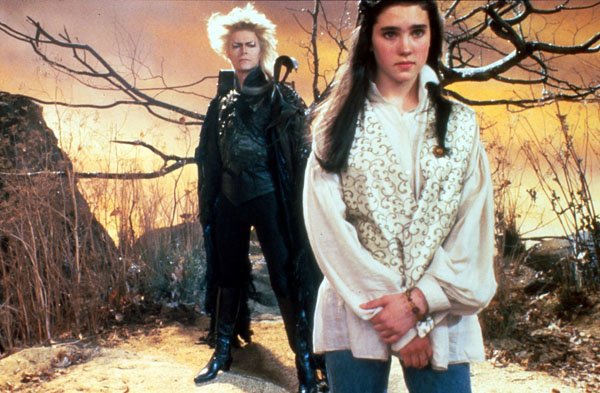
By 1983 David Bowie had already achieved international stardom. Between 1976 and 1983 Bowie had released his most critically acclaimed and influential albums: Station To Station (1976), Low (1977), “Heroes” (1977), Lodger (1979) and Scary Monsters (and Super Creeps) (1980). Bowie’s image had transformed from that of glam rock star to that of New Wave Art Rocker. Bowie’s association with Iggy Pop and Brian Eno only further solidified his status as a significant and serious musician capable of not only penning commercially viable material, but culturally significant material as well. This was the Bowie of Merry Christmas Mr. Lawrence (1982).
In terms of acting, Bowie had already improved his critical standing by adding his stint on Broadway in The Elephant Man (1980) to his resume’ (which also included the films The Man Who Fell To Earth, Baal, and Just A Gigolo). This image of Bowie as a legitimate artist was the one used in the marketing of Oshima’s Merry Christmas Mr. Lawrence. Oshima’s films themselves had become internationally respected and acclaimed at the same time Bowie was recording his “Berlin Trilogy”. The erotic qualities associated with Oshima’s In The Realm Of Senses (1976) and Empire Of Passion (1978) informs the potential viewer’s expectations of Merry Christmas Mr. Lawrence. Both the Oshima and Bowie brands are correlated to ensure international commercial success (their high profile and cult status), and the promise of an erotic “journey” of some sort.
Now imagine the pre-Let’s Dance David Bowie of 1983 at the center of George Lucas’ marketing campaign for Jim Henson’s Labyrinth (1986). Lucas’ production of Henson’s film can only succeed with Bowie as its main marketing ploy post Bowie’s 80s Pop Star period that resulted after the release of Let’s Dance (1983) and Tonight (1984). Just as Merry Christmas Mr. Lawrence was released Bowie launched himself into the arena rock of 80s Pop Music, reinventing himself yet again. This 80s Pop Star was the version of David Bowie at the center of Labyrinth’s marketing.
Though Lucas’ Star Wars and Indiana Jones films were bigger than The Muppets, Lucas’ franchises over shot the demographic Labyrinth was aimed at by about five years. Labyrinth is geared toward kids and pre-teens, which relegates Lucas’ role as a branding mechanism to serve as a stamp of special effects quality recognizable only to regular moviegoers and critics. Henson is the focus, with a promise of fun, family oriented escapism.
In 1986 David Bowie was a familiar face and voice to youngsters, playing on MTV dozens of times a day. But Bowie cannot totally revise his brand, someone somewhere will always remember The Laughing Gnome, the simulated blow jobs during the Ziggy era, or the Nazi salutes. In an effort to address the sexuality of Bowie, an aspect of his persona that would remain inescapable till the release of Black Tie, White Noise (1993), King Jareth was outfitted with a ridiculous cod piece and glam rock hair-do. But to further cash in on Bowie’s stardom Henson and Lucas opted to make the film a musical, with Bowie singing six original songs; a move Oshima decided against three years earlier and Roeg a whole decade before. Aside from Alan Clarke’s film of Brecht’s Baal (1982), Bowie had never appeared in a feature length musical before.
Though Labyrinth sounds like it couldn’t fail to attract an audience, it did. The reason for this was largely due to Bowie’s fan base. Like George Lucas, the average Bowie fan in 1986 averaged at about 18-20 years of age, according to Mike Spitz. It’s therefore reasonable to assume that Bowie fans were more interested in films like Tony Scott’s The Hunger (1983) than in Jim Henson’s Labyrinth. In terms of a profit to budget ratio, Merry Christmas Mr. Lawrence made more money, undoubtedly because of how carefully coordinated the correlation was between film subject, director and film star. It would take years of home video releases for Labyrinth to achieve it’s popular status as a cult classic, while, quite ironically, Merry Christmas Mr. Lawrence faded into obscurity until its Criterion Blu-Ray and DVD release.
